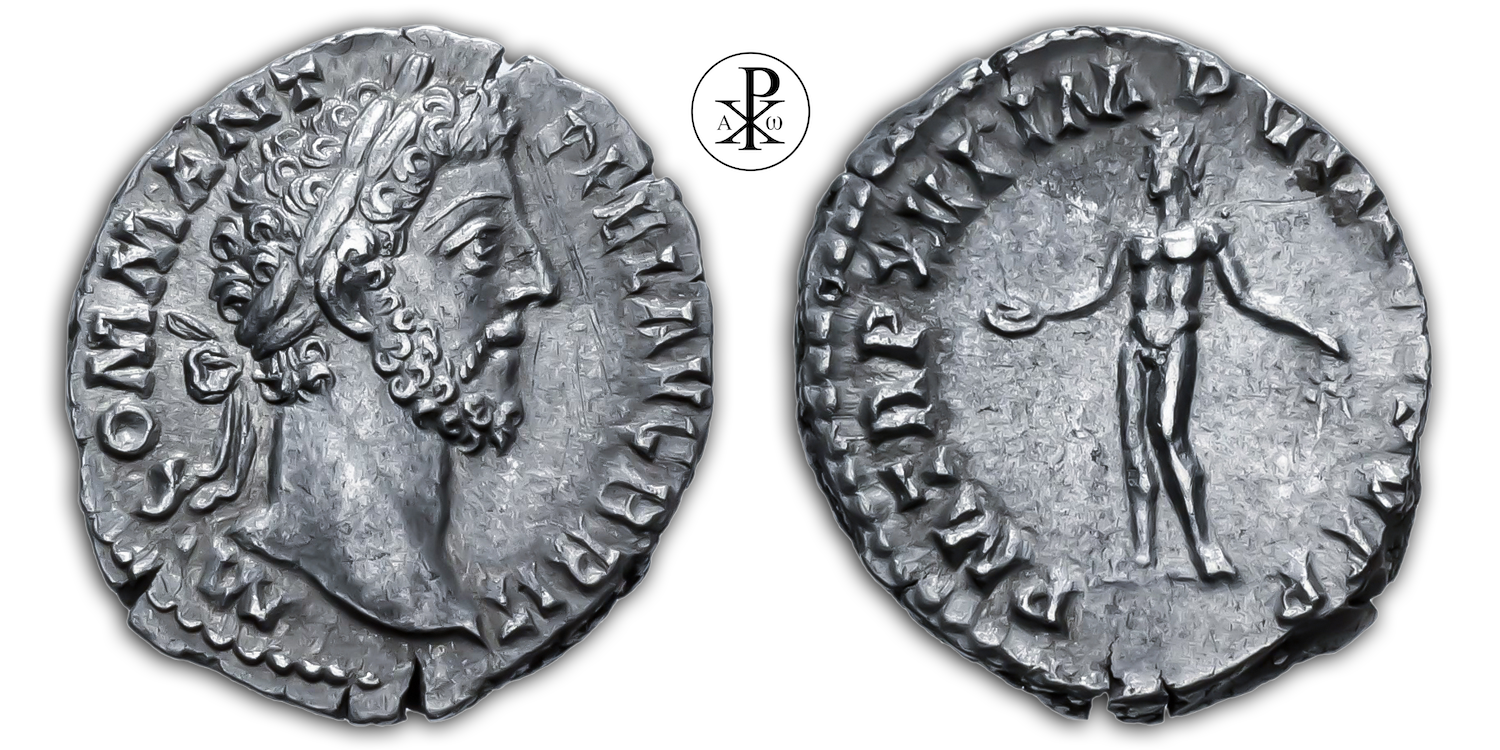Imperator Caesar Marcus Aurelius Commodus Antoninus Augustus
Reign: Commodus
Mint: Rome
Date: 187/188 AD
Nominal: Denarius
Material: Silver
Diameter: 16mm
Weight: 3.09g
Reference: RIC III Commodus 167
OCRE Online: http://numismatics.org/ocre/id/ric.3.com.167_denarius
Rare: R1
Provenance: CNG Classical Numismatic Group Lancaster, USA (Auction 534, Lot 601)
Provenance: Harlan J. Berk inventory cc78850 (nd)
Pedigree: From the Conti Collection
Obverse: Head of Commodus, laureate, right
Inscription: M COMM ANT P FEL AVG BRIT
Translation: Marcus Commodus Antoninus Pius Felix Augustus Britannicus
Translation: Marcus Commodus Antoninus, the pious, the fortunate, Augustus, conqueror of the Britons
Reverse: Bonus Eventus, nude, standing left, sacrificing out of patera in right hand and holding corn-ears in left hand
Inscription: P M TR P XIII IMP VIII COS V P P
Translation: Pontifex Maximus, Tribunicia Potestate Tertia Decima, Imperator Octavum, Consul Quintum, Pater Patriae
Translation: High priest, holder of tribunician power for the 13th time, Imperator for the eighth time, consul for the fifth time, father of the nation
Comment: Bonus Eventus (Latin „happy prosperity“, „happy outcome“) was originally a rural blessing god of the Romans, who is still listed by Varro (de re rust. I 1, 6) among the twelve most outstanding „duces agricolarum“. The connection with evenire, eventus, the proper expressions for the good rising and flourishing of the crops (Cato de agric. 141. Fest. ep. p. 220), indicates the nature of his activity. To the same degree that the occupation with agriculture lost its value for the Roman citizen, its significance, as the inscriptions above all show, expanded to a god of happy outcome and success in general. Thus Bonus Eventus became more and more a general symbol of good fortune par excellence during the imperial period. In imperial times, he had a temple on the Field of Mars, near the Baths of Agrippa, from which the name was transferred to a neighbouring portico built under Constantine. In addition, there were several statues of him in the city. The most famous of these – because supposedly created by the well-known sculptor Praxiteles – stood on the Capitol together with one of Bona Fortuna. The god’s head can already be found on coins of the Republican period. The coins of the Roman emperors then show the god standing and unclothed. The attributes given to the Bonus Eventus, who was conceived as a youthful hero, were ears of corn, poppy blossoms, a patera (sacrificial bowl) and – more rarely – a cornucopia or grain measure.
The „Bonus Eventus“ type of denarius presented here from the year 187/188 AD may also have been related to the „Maternus Affair“. When in 186 AD the band of robbers of Maternus, who were marauding in Spain and Gaul, received the news that Commodus had assembled an army against the rebels – Maternus was able to escape to Italy with some of his people. Around the beginning of 187 AD, he probably arrived there and made a plan to assassinate Commodus. Maternus and his followers wanted to disguise themselves as praetorians at the Feast of Hilaria in Rome and kill the emperor. However, he was betrayed by his own people, so that the plot was discovered and prevented before the festival. Maternus and his followers were then immediately beheaded. The happy salvation of Commodus was celebrated with festivities – likewise some coins were minted for this event, such as the issues of Hilaritas (cheerfulness), Laetitia (happiness), Salus (well-being) or also the Bonus Eventus (happy outcome) presented here.
